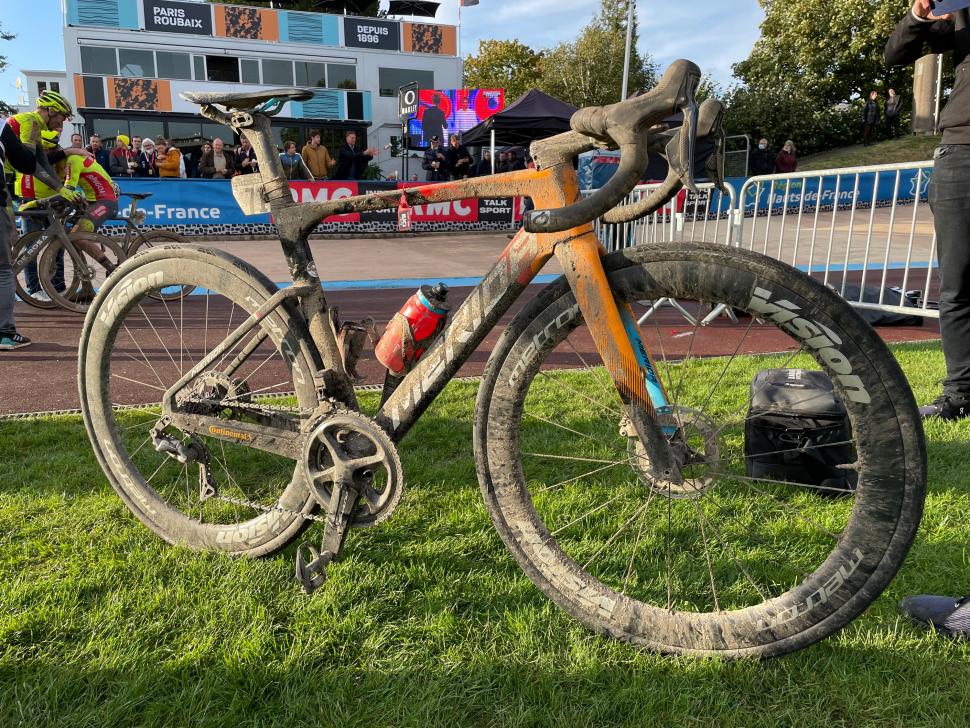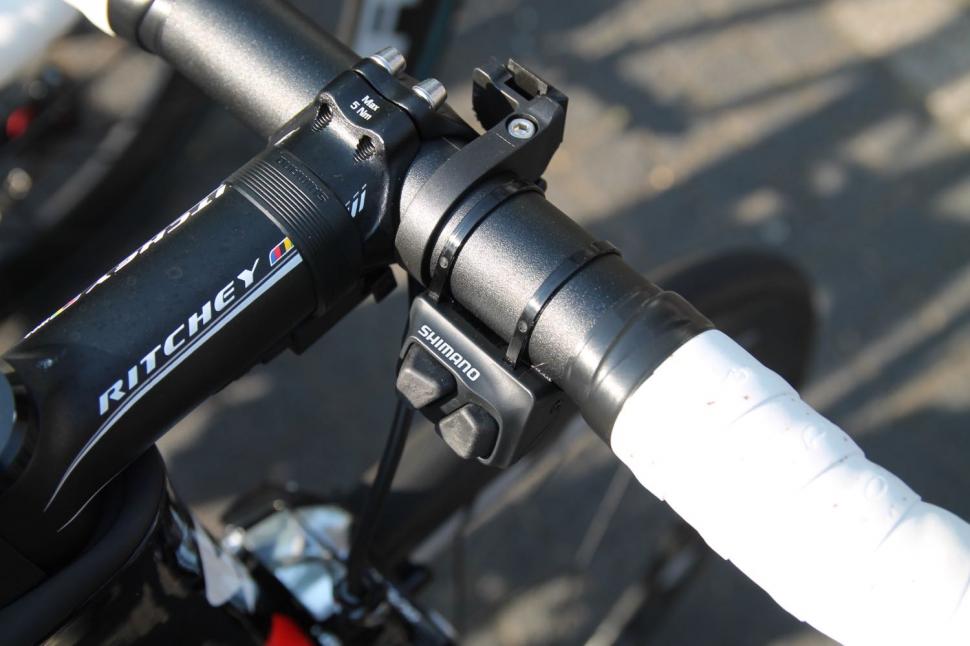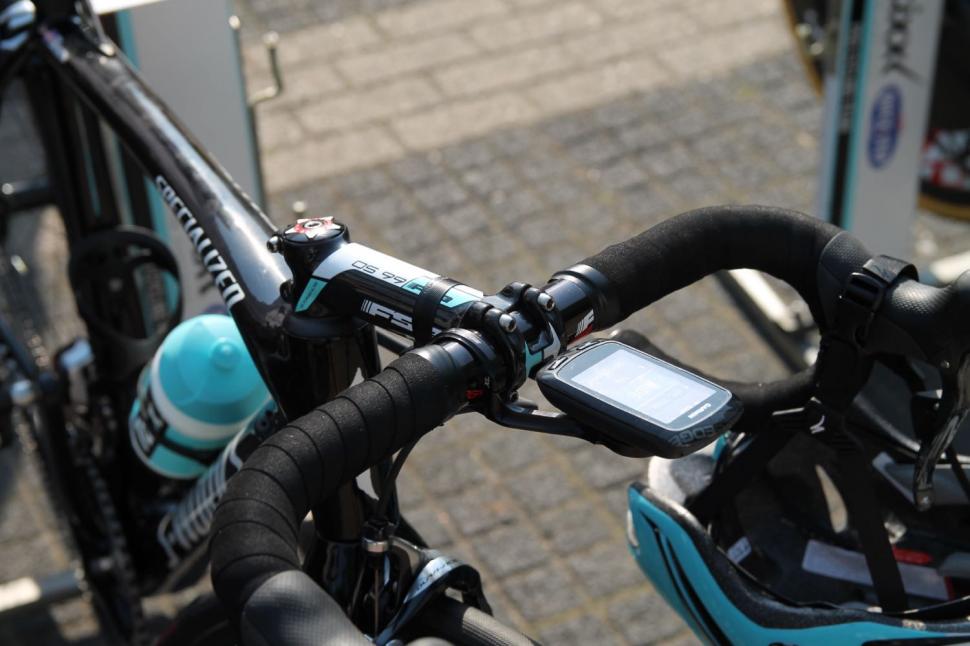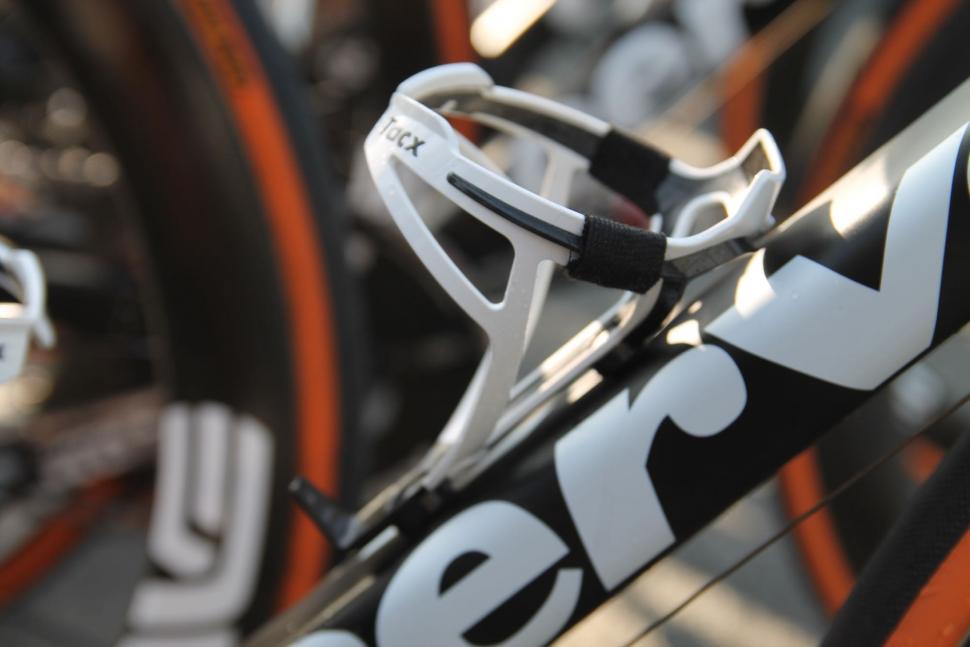- News
- Reviews
- Bikes
- Accessories
- Accessories - misc
- Computer mounts
- Bags
- Bar ends
- Bike bags & cases
- Bottle cages
- Bottles
- Cameras
- Car racks
- Child seats
- Computers
- Glasses
- GPS units
- Helmets
- Lights - front
- Lights - rear
- Lights - sets
- Locks
- Mirrors
- Mudguards
- Racks
- Pumps & CO2 inflators
- Puncture kits
- Reflectives
- Smart watches
- Stands and racks
- Trailers
- Clothing
- Components
- Bar tape & grips
- Bottom brackets
- Brake & gear cables
- Brake & STI levers
- Brake pads & spares
- Brakes
- Cassettes & freewheels
- Chains
- Chainsets & chainrings
- Derailleurs - front
- Derailleurs - rear
- Forks
- Gear levers & shifters
- Groupsets
- Handlebars & extensions
- Headsets
- Hubs
- Inner tubes
- Pedals
- Quick releases & skewers
- Saddles
- Seatposts
- Stems
- Wheels
- Tyres
- Health, fitness and nutrition
- Tools and workshop
- Miscellaneous
- Cross country mountain bikes
- Tubeless valves
- Buyers Guides
- Features
- Forum
- Recommends
- Podcast
feature
 Sonny Colbrelli Merida Reacto Paris-Roubaix 1 (Credit Merida)
Sonny Colbrelli Merida Reacto Paris-Roubaix 1 (Credit Merida)10 set-up tips to make your bike ride better on cobbles (and rubbish British roads)
Riding over the cobbles is a lot of fun – in a masochistic kind of a way – but it’s hard on both your body and your bike. The pros and their mechanics have plenty of tricks for tackling the pavé successfully and you could make use of some of them to add comfort to your own bike, whether you’re heading out to do a cobbled sportive or you’re just trying to cope with potholes at home.
The frame
Most big bike companies have an endurance road bike that’s designed to damp vibration and soften bumps more effectively than a standard road bike, and many of these make an appearance in the cobbled classics.
Trek, for example, has its Domane with an IsoSpeed decoupler that allows the seat tube, and therefore the saddle, to move independently of the rest of the frame.
Some new versions of the Domane also have a front IsoSpeed decoupler that allows a specially shaped carbon fibre steerer tube to bend slightly between the two headset bearings.
Check out our review of the Trek Domane SLR 6 here.
Loads of other framesets are designed to add comfort over rough and uneven roads: the Specialized Roubaix (this is Mark Cavendish's Roubaix from a few years ago pictured above), Cannondale Synapse, Giant Defy, Bianchi Infinito and so on.
These bikes tend to offer a slightly more upright riding position than traditional race bikes, although the pros usually go for the lowest, most aggressive position possible.
John Degenkolb won the 2015 Paris-Roubaix on a 2014 Giant Defy Advanced SL, a frame designed to offer plenty of give with features that include skinny seatstays that attach to the seat tube at a very low point, and a top tube that’s designed to increase the frame’s compliance. On the other hand, Mathew Hayman won 2016's race on an aero Scott Foil, a standard road bike but for the 28mm tubulars he used.
You might not have to cope with cobbles on your commute or your weekend ride, but a bike frame that’s designed to add comfort to your ride might still be a worthwhile investment.
Check out our Buyer’s Guide to Sportive and Endurance bikes here.
Double handlebar tape
Many pro riders use a double-layer of handlebar tape for the cobbled classics. Doubling up helps to provide more cushioning from the vibration and also fills your palm more for easier grip. This is useful because all the bumping can tire your hands and forearms and make holding the bars much more difficult than usual.
Some teams also fit gel pads under the tape for even greater cushioning. Most of the padding is fitted to the tops of the handlebars although it’s also sometimes put on the drops too.
Doubling your bar tape is a lightweight and cheap way of adding comfort to your everyday riding. After the first time, it costs no more than using a single layer of bar tape because the inner layer is very unlikely to wear out (or, at least, it’ll require changing far less often than the outer layer).
Wide tyres, lower pressures
Most pro riders use 25mm wide tyres on asphalt these days and switch to something wider for the pavé.
A larger tyre increases the size of the cushion of air between you and the road and that’s important on the cobbles. The Flanders cobbles tend to be relatively uniform in size and well maintained – mostly – but in Paris-Roubaix… well, the size of the cobbles varies massively and there are holes all over the place so you’re in for a very, very rough ride. Wider tyres help.
Most riders use 27mm or 28mm tyres for Paris-Roubaix – FMB’s Paris-Roubaix 27mm tyres are everywhere – although 30mm tyres have become more common over the past couple of years too.
Teams are often cagey about the tyre pressures the pros use. I say 'cagey', they actually act like they're in MI6. A lot of work goes into getting the wheel/tyre combo right for the individual riders and they’re reluctant to say anything at all. We’ve asked mechanics about tyre pressure before, both on the road and on the cobbles, and they wouldn’t tell us a thing.
Judging from the info we have managed to glean, most riders are at 5-5.5 bar (73-80psi) over the cobbles. That’s low compared to normal road race pressures because riders want the tyres to cushion the ride to avoid jolting, and to mould to the cobbles better.
Some teams say that they age their tubular tyres for several years prior to use in the classics because they believe new tyres tend to puncture more easily. The tyres are said to become more supple with age. According to the tyre companies we've spoken to, that's not true.
If you're heading to a cobbled sportive or if your local lanes are poorly surfaced, take a tip from the pros and fit some wider rubber, as long as your frame, fork and brakes provide enough clearance.
Check out our article explaining why you need to switch to wider tyres.
Satellite shifters
Many riders who don’t customarily use satellite shifters run them for the cobbled classics.
Satellite shifters allow you to change gear on an electronic drivetrain via a button rather than via the normal shift levers. Specialist climbers frequently have satellite shifters fixed to the top of the bars while sprinters often have them on the drops where they’re easily accessible when gunning it out of the saddle.
If you’ve never ridden the cobbles you might not realise why satellite shifters are a benefit here. It’s hard to explain just how ridiculously bumpy they can be. It’s nuts! Sometimes it’s really difficult to shift your hand position on the bars and occasionally it can be hard even to reach out to the levers with your fingers because you don’t want to compromise control.
By offering another gear changing option, satellite shifters can be a valuable asset on the pavé. Some riders even run satellite thumb shifters on the drops and more satellite shifters positioned up by the stem.
Satellite shifters might be a neat addition to your own bike if you’re lucky enough to have electronic shifting, but if your local roads are so bumpy that you need these shifters because you daren’t alter your hand position on the bars, you need to write a stern letter to the council!
Saddles
Some riders change saddles for the cobbled Classics, going for something with more cushioning.
Team Ineos’s Elia Viviani, for example, switches from a regular Fizik Arione to the Arione K1 with more padding. It's actually designed as a triathlon saddle.
Other riders prefer to stick with their tried and tested favourite.
Aluminium handlebars
A lot of pro riders use aluminium handlebars all the time – one of our contacts at Trek told us that most of their sponsored riders use a £30 Bontrager Race VR-C alloy bar for durability – and many of those who usually use carbon switch to aluminium for the cobbled races.
This is Mark Cavendish’s bike from a cobbled stage of the 2015 Tour de France, fitted with an aluminium bar from FSA.
Chainrings
There are several famous climbs in the Tour of Flanders, like the Koppenberg, Paterberg and Kwaremont, but Paris-Roubaix is relatively flat so riders tend to use quite a large inner chainring, usually a 44 or 46-tooth.
A larger inner chainring keeps the chain tighter so it’s less likely to get unshipped by bumps from the cobbles and pretty much every rider uses a chain catcher for more security.
Some teams use outer chainrings that are built stronger for the classics.
If you think you could do with swapping chainrings yourself, it’s a pretty straightforward job although you’ll need to adjust your front derailleur and perhaps swap your chain too.
Bottle cages
It’s very easy for bottles to jump out of bottle cages over the cobbles. As well as losing drink, an escaped bottle is a hazard.
Many riders who regularly use lightweight carbon-fibre bottle cages switch to aluminium for the cobbled classics. Aluminium cages are more durable and you can bend the metal just a touch to provide more pressure.
Some teams put grip tape on the inside of their cages to provide more friction. It’s very easy for you to do this yourself if you have problems keeping your water bottle in place.
Extra brake levers
Although not all that widespread, some riders fit additional brake levers to the tops of the bars because they like to position their hands up there for the cobbles.
These are on Tony Martin’s bike from the 2015 Tour de France.
You’re unlikely to need these for normal road riding, although you might like to have them for riding in traffic, for example. If you run hydraulic disc brakes, you can now get extension levers for them too, at least for Shimano systems, in the form of Shimano's GRX extensions.
Disc brakes
Disc brakes are now so common in the peloton that their use in cobbled races is fairly unremarkable.
One of the key benefits of disc brakes is that they perform almost as well in wet conditions as they do in the dry. That could be a real benefit in a race like Paris-Roubaix which can quickly become very muddy if it rains.
That said, there hasn't been a wet Spring Paris-Roubaix since 2002, so disc brakes have had to prove themselves in other wet races. Thanks, global warming!
When Paris-Roubaix was postponed to October in 2021, the weather was much more the mudfest that we used to expect of Paris-Roubaix, especially for the men. If anyone was still using rim brakes we've not been able to find a photo of them, and winners Lizzie Deignan and Sonny Colbrelli bothused tyres substantially wider then their rims, strongly suggesting they were on 30mm rubber.
For the rest of us, the big advantage of discs is that manufacturers who fit them have mostly taken the opportunity to provide more space around the rims, so you can run fatter tyres for improved grip and comfort on crummy surfaces.
Mat has been in cycling media since 1996, on titles including BikeRadar, Total Bike, Total Mountain Bike, What Mountain Bike and Mountain Biking UK, and he has been editor of 220 Triathlon and Cycling Plus. Mat has been road.cc technical editor for over a decade, testing bikes, fettling the latest kit, and trying out the most up-to-the-minute clothing. He has won his category in Ironman UK 70.3 and finished on the podium in both marathons he has run. Mat is a Cambridge graduate who did a post-grad in magazine journalism, and he is a winner of the Cycling Media Award for Specialist Online Writer. Now over 50, he's riding road and gravel bikes most days for fun and fitness rather than training for competitions.














Dramatic Huddersfield crash as van flips onto the kerb...
We have the collision system on our Nissan. It does work extremely well, whilst driving along a country lane once, a jogger ran out of a track onto...
If you lived in Scotland, you might not say that.
I totally hate the team selection process. So that is it for me with Velogames
Well how do you expect her to carry a treadmill on her bike ?
Drivers have to drive on the left, and when there is more than one lane (except at junctions) stay in the left lane except when overtaking. There...
DO IT FOR YOOOOOOOORKSHIIIIIRE
Shurely you stop at "you'd be liable". I haven't checked the details yet but surely cameras and witnesses only come in if there is a dispute? If...
Shimano Tourney rear mech has an oversized lower pulley and it's red!...
NOTHING can destroy a Cyber Truck*….😎😏 #WorldBollardAssociation *swasticar